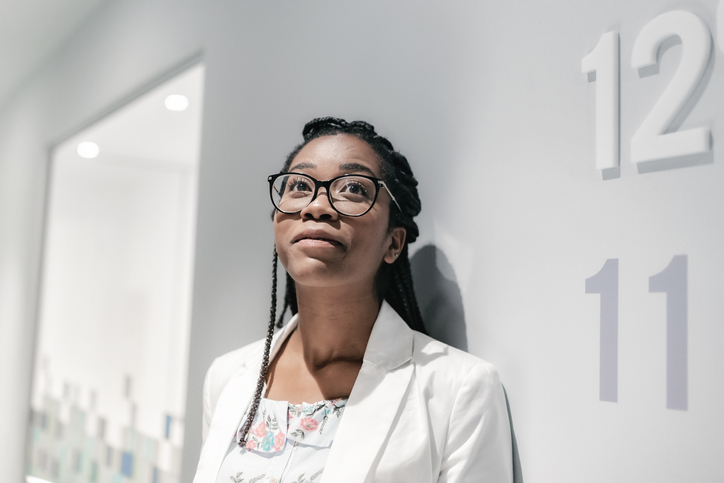
Source: golero / Getty
Wearing your natural hair or a protective hairstyle during an interview is like walking past the police with a hoodie on your head. Even though you’re doing nothing wrong, you’re still likely to be seen in a negative light. This similar level of discrimination against Black hair has a crucial impact on why African-American women generally don’t wear their natural hair for a job interview or find themselves leery about doing so. There is even some hesitation when already employed, to go outside of what some deem the “norm.” According to a study done by the Perception Institute, Black women are “twice as likely to report social pressure to straighten their hair at work compared to white women.”
From the 19th century to today’s society, Black women have struggled with owning their natural hair and protective hairstyles because of what was deemed desirable. During slavery, back in the early 1800s, Black women went from owning their roots through tribal hairstyles to wearing specific styles the slave master permitted. When servitude was abolished in 1865, the women who adapted to the European hair trends were seen as socially evolved while those who didn’t were labeled as unsuitable.
Times have changed, though not drastically. The CROWN Act of 2019 (Creating a Respectful and Open World for Natural Hair), a law passed in California that has inspired similar versions in bill form around the country, seeks to put an end to discrimination based on hair texture and style. And though it has up to $250,000 in penalty fines for violations, negative perceptions of African-American hair remains an issue across all industries. This disheartening reality influences some Black women’s decision to wear lace-front wigs and weaves that blend in with Eurocentric hair trends when looking to make a good first impression.
Unfortunately, I can admit that bias against Black hair affects how I prepare for a job interview. In early January, I was going over a company’s background for a round-one interview when I realized my current Afrocentric look could be deemed controversial. Unsure of whether to keep it, I asked my girlfriends what they thought was the best move. One friend asked me if the company was predominantly white and my response made it clear what needed to be done. As dismal as it was to think about, we all knew that I’d make a better impression with my middle part curled wig.
Having studied at a predominantly white institution (PWI), I knew that my college experience would prepare me for the discriminatory culture of our workforce. The U.S Bureau of Labor Statistics for 2020 highlights the reality that caucasian people make up 78 percent of the workforce. Since more than a third of businesses have low diversity rates, professional hairdos are thought to be similar to a demographic with straight, curly, or smoothed hairstyles and textures. This leaves faux locks, box braids, crocheted afros, and other protective hair trends excluded from the “proper” hair guidelines, though employers won’t say it.
One of my sisters learned just how bold people can be with their opposition to protective hairstyles in the office. She interviewed for a job with a permed pixie cut and changed it to Boho faux locs months after she was hired. Although she received support from some of her colleagues for the look, the supervisor of her department, a white woman, started giving her a hard time. It began with an unprovoked attitude that escalated into a toxic work environment. She believed that her choice to embrace an undeniably Black style after onboarding didn’t sit well with her manager.
Working in retail and luxury consignment, I’ve seen how a high level of diversity within a business can motivate employees to be creative with their hair choices. Still, even though these diverse companies have a casual work environment, the staff members who were more expressive with hair color and textures weren’t often taken seriously. The commonality between executives and the promoted was that they all followed the unspoken rules of professional hair.
As more Black women step out of the corporate norms, the fight to wear our hair loud and proud continues. Though it might take another decade before we see White House officials wearing natural hairstyles, there are professionals in politics and in the overall public eye who give us hope. Women like Stacey Abrams and White House Correspondent Yamiche Alcindor are living proof that you can dominate your field in your natural crown.
The more we talk about hair bias in the workplace, the more I see Black professionals posting themselves on social media, defying the expectations of the spaces they work within. Normalizing natural hair and protective hairstyles in the office starts with taking a stand during the interviewing process. I may not have lived by example in my most recent interview, but when you have an opportunity to take a chance and be acknowledged as a professional within a proud natural hair era, you should take it.
